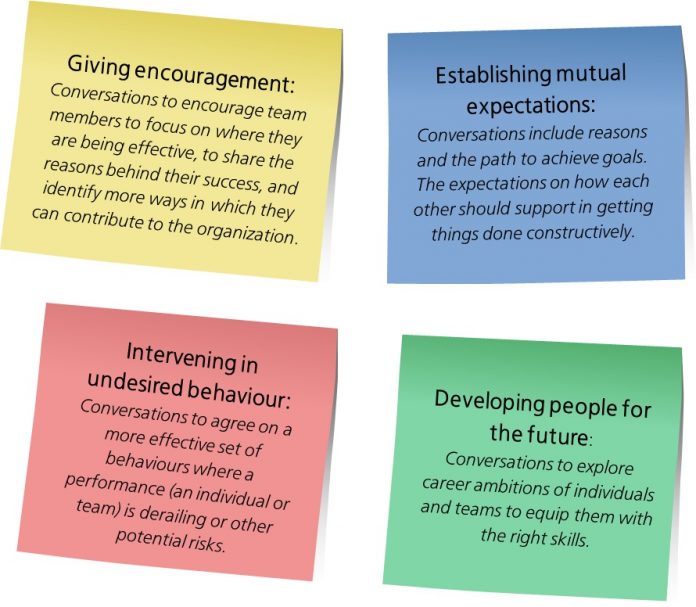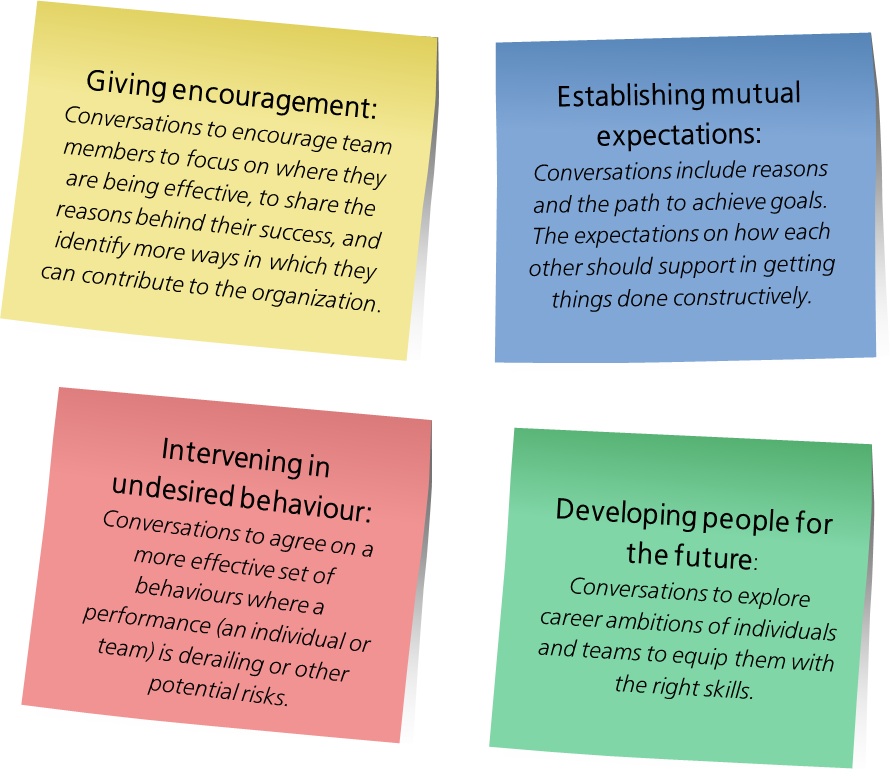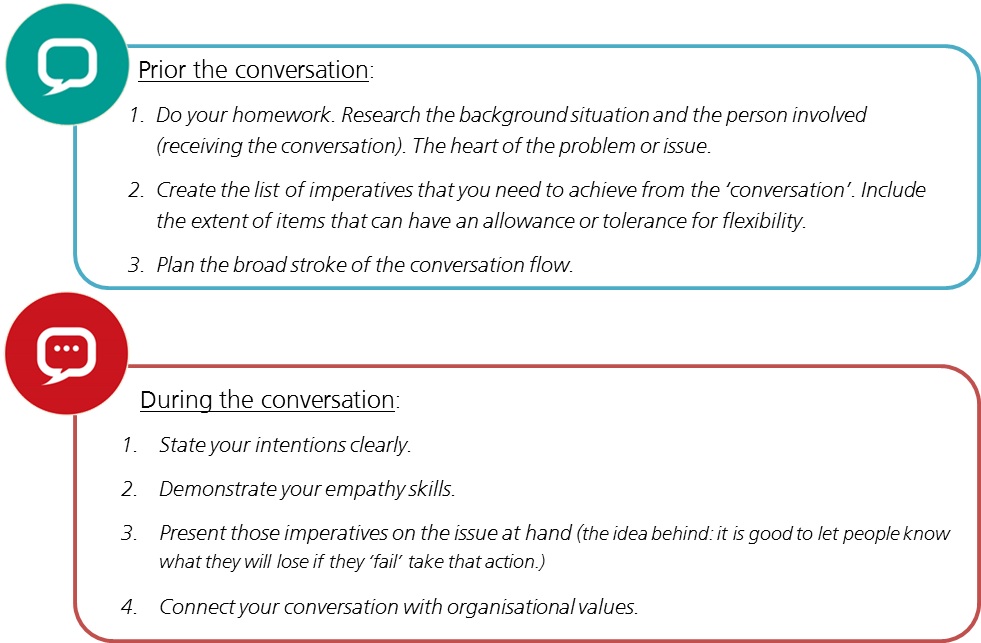
Joe looks at his desk, yet another pile of documents needed for processing, along with numerous e-mail reminders chasing for progress status. He feels he is drowning in an endless stream of work, including tasks that are supposed to be handled by his co-worker, Danny (the re-directing chap). Moreover, he has a hard time learning those new computing applications when processing those documents, and that is affecting his confidence at work, as well.
Alan (Joe’s supervisor) walks toward Joe’s cubicle and notices “the situation.” “Joe, are we on track with the new proposal and how are you with XYZ projects? Let’s discuss these items again over tea. Do share with me your concerns. We need to move those projects quickly.”
Playing the part of Alan, how would you “engage” Joe? What type of conversation would you have? How would you provide an intentional approach to having such a conversation to yield productive outcomes? What consequences would there be if it’s done with a simple verbal instruction? What if Alan simply avoided such a conversation by sending an e-mail?
Today, most organizational transactions still take place in live, in-person conversations. E-mails, SMS, Slack, and Whatsapp are faster, cheaper, and more convenient than face-to-face in-person options for staying connected and sharing information.
However, issues arise when these methods of communication are used to avoid critical and confrontational messages that could result in a significant impact on the business. Effective leaders are able to leverage the use of technology to enhance communication efficiency. At the same time, they balance the use of those face-to-face conversations required to overcome those challenges and get things done.
Key Principles
Critical conversations can be perceived as any interactions in which stakes are high and opinions differ, leading to confrontational consequences and emotions that can easily boil over. Generally, these conversations commonly fall into the following communication types:

The following are a set of “elements” (values and attitudes) needed when framing and delivering critical conversations to drive change and sustainable progress:

Elements: Values and attitudes
Forward-looking: Offers a constructive plan of actions/recommendations
Values-centricity: Alignment with organizational values and vision
Critical Conversations to Lead and Drive Change
Some guidelines when carrying out a critical conversation:

Follow up after the conversation. It is crucial for any improvements or positive change to occur; it has to be tracked and re-calibrated periodically. The same goes for carrying out critical conversations. It is often iterative and incremental in nature for any results of the critical conversation to be successful. Continuous critical interactions need to be timely, purposeful, and values-driven to create a lasting impact for the organization.
“Grooving” for Critical Conversation
Be true to yourself when delivering your message. Your values and principles play a big part in presenting those messages to be heard. Make use of those guidelines mentioned; the next part is simply to practice, practice, and practice.
The ability to engage in persuasive conversations remains the most vital skill for any leader to be successful. It is unlikely that workers ask to improve their conversation skills, but more often, they seek support in improving work conditions, greater autonomy, and other expectations. When you examine most of these issues, you will find that often the right conversations either didn’t occur or failed to achieve the desired results.
Hence, getting it right for critical conversations to happen should be at the top of a leader’s list of actions in order for the organization to have sustainable growth. Building these conversations into your work (and beyond) will help you to pave the way to become a more effective and productive leader.
Johnson Wong is an L&D consultant at CET Global Pte Ltd. A design-thinker and learning strategist, he has more than 15 years of experience working in the learning and development field, for the higher education sector and private training entities, where he has conducted numerous research studies, facilitation, and training workshops in both private and public schools. Wong recently released a simple resource book relating for learning designers and training professionals. It’s available at https://www.amazon.com/Advanced-Design-Techniques-Johnson-Voon/dp/9811144397/ref=sr_1_1?s=books&ie=UTF8&qid=1505794065&sr=1-1&keywords=advanced+design+techniques




